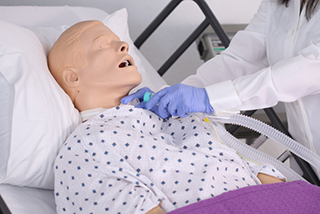
A remote, live in-service (virtual) may be pre-scheduled for education for a variety of medical settings and professionals. In-service webinars are presented by a clinician experienced in the use of the Passy Muir Valve and provide information related to the physiologic changes that may occur following the placement of a tracheostomy tube. We offer a variety of webinar topics ranging from assessment (including upper airway assessment, transitioning from vent to non-vent use, and troubleshooting strategies) to ethics, Trachlore, dysphagia, and so much more. Some webinars include demonstrations and case studies to enhance learning. All presentations provide evidence-based benefits of using a bias-closed, no-leak speaking Valve, including the impacts on voicing, swallowing, secretion management, and decannulation.
For those clinicians and facilities who are interested in increasing Passy Muir Valve use with patients on mechanical ventilation or who want to develop a multi-disciplinary team, a webinar may be scheduled that includes discussion on ventilator adjustments to increase successful placement of the Valve and safe alarm practices or a webinar with clinical discussion on team development.
Here are a few comments from clinicians who have received education:
It went extremely well and the pulmonologists were extremely enthusiastic regarding getting the PMSV in-line with vent earlier in our acute care setting. I think we sparked a huge MD interest to improve on the care we provide, which is fantastic.
We are using the valves extensively… and have had great success using it in-line. In fact, one patient just spoke for the first time in TWO YEARS! The speech therapist and CNAs were actually standing around the patient crying with joy when she successfully spoke. It’s amazing how being able to speak again can make a patient feel more like a person again, and facilitate the weaning process.
Please contact a Passy Muir clinical specialist to discuss the specific needs of your facility or email education@passymuir.com to schedule education.










